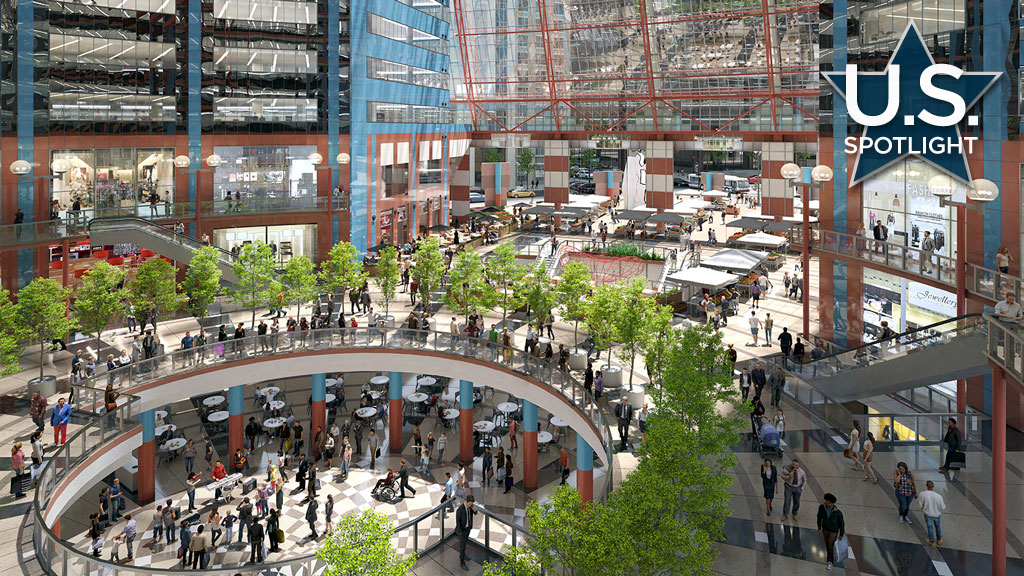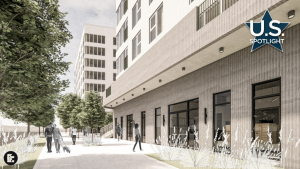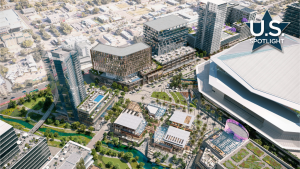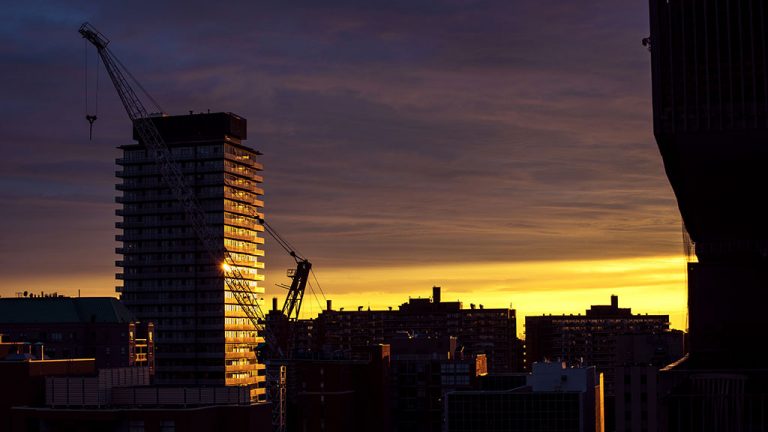The James R. Thompson Center in downtown Chicago’s Loop is a postmodernist icon.
Designed by the late Chicago-based Helmut Jahn, it combines a partly spherical base with a vast interior atrium surrounded by 17 floors of offices.
Built in 1985 as the State of Illinois’s Chicago government campus — it’s named after a former governor — the state recently moved its employees to a nearby location and Google purchased the building for $105 million to consolidate its 2,000 staff working at various city locations.
But before it moves, the building will see a massive $280 million overhaul. The contract has been given to Chicago’s The Prime Group and Capri Investment Group. The work partly incorporates design changes that preservation groups and Jahn himself proposed.
Jahn was killed in a bicycle accident in 2021.
Chief among the changes is the transformation of the building’s most visible feature, the glazed rotunda at the building’s base.
Gone will be the transparent glass that surrounded the interior space and, in its place, will be more opaque energy efficient triple glazed panels. But the distinctive salmon, blue and while color scheme will likely be toned down or eliminated.
Details have been sketchy, and the architecture studio and developers didn’t respond to requests for comment.
Moreover, while keeping the interior open to the public, Google will redesign a covered colonnade that includes shops, restaurants and event spaces.
As well, the building incorporates Chicago’s busiest “L” transit hub, where six lines meet. That will not change and in fact the renos could provide easier flow.
The Prime Group’s Michael Reschke is cognizant of the building’s unique design.
“It has a priceless location, iconic architecture, irreplaceable atrium, that would be hard to replace in downtown Chicago,” he said at the groundbreaking in early May.
And, in a statement, Google said it wants to honor the building’s postmodern legacy by introducing a “respectful design evolution.”
Besides keeping the atrium, it says the colonnade “will be redesigned to allow for an enhanced ground floor experience, including opportunities for more food and beverage retail and seasonal activations of the plaza.”
Besides a “new and improved (transit) experience” the owner hopes the complex will be something more – “a thriving community destination for all Chicagoans in a revitalized Loop neighborhood.”
Replacing the heating and cooling, a perennial problem with the building, is key. The structure will go to LEED platinum and all-electric power, part of Google’s plan to be net-zero by 2030.
And while observers fear change in the glazing the company states it “will modernize the way the building looks and maximize natural daylight and views.”
Repurposing the Thompson Center for the 21st century also means three levels of new greenspaces and “biophilic design elements that borrow from nature,” the company says.
Frank Butterfield, COO of Landmarks Illinois, which spearheaded a coalition instrumental in saving the center, said while certain design elements will change “the biggest preservation win is that the building is retained” and “in the end Google wanted that building largely in the form that it is.”
Google has a history of preserving legacy buildings such as Pier 57 in New York City and the Arnulfpost in Munich, Germany.
Ward Miller of Preservation Chicago applauded the move because the building could have faced demolition.
“Google will revisit this building and celebrate it and that wasn’t always the case a number of years ago when numerous governors tried to sell the building,” he said.
Miller called it “bittersweet. There’s a tremendous amount of preservation that’s occurring there but there’s also a lot of features that will be either covered up or removed. We’re hoping that at the end of the day it turns out to be a lovely project.”











Recent Comments
comments for this post are closed